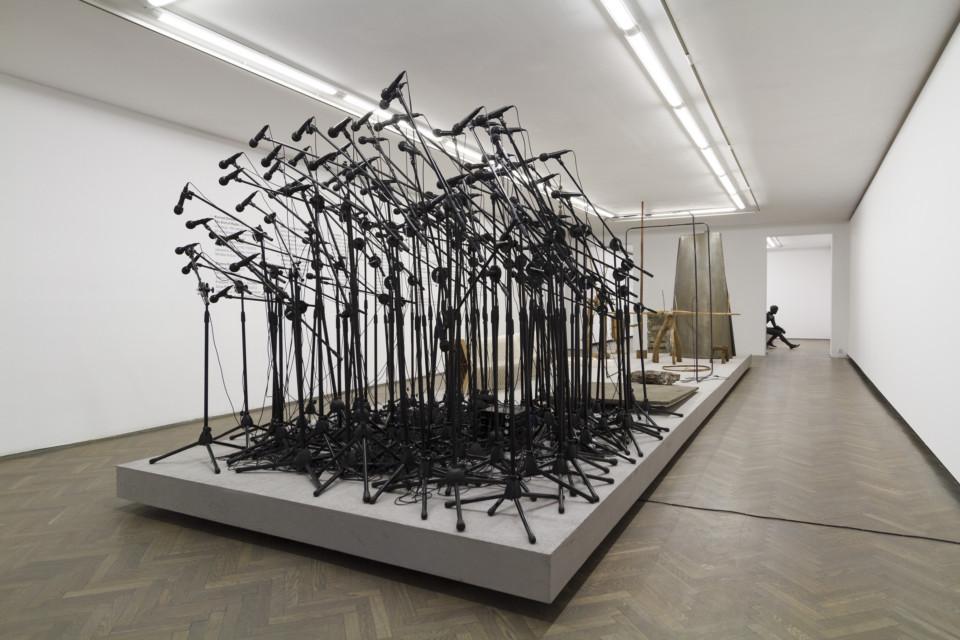Konrad Smoleński
The End of Radio
Konrad Smoleński
The End of Radio, 2012, audio-installation, 194 microphones, 210 stands, 20 headphone amplifiers, 5 DVD players and others
Collection II of the Arsenal Gallery in Białystok. Work purchased by the Podlaskie Association for the Promotion of Fine Arts

Konrad Smoleński’s installation The End of Radio is constructed of nearly two hundred microphones on stands. The microphones, placed side by side in a dense grouping, emit a recording made in the course of an opinion poll conducted in the street. Reversal of the basic function of a microphone constitutes the key to the installation’s conception and concurrently the foundation on which the artist constructs the meanings contained in his work. Instead of “collecting” sound, that is transforming acoustic waves to electric current, transducers used by Smoleński “send out” the current.
The recording that reaches the recipient is not clear. The microphones emit static; only single words are heard over distortions. The form of the installation reinforces the feeling of chaos and of sound overload which is difficult to comprehend. Crackling and garbled words issue from a thicket of appliances which encircle and press upon the recipient. In this way, Smoleński builds a perception of uncertainty and menace, a feeling of a displacement in fixed schemata that impose order on reality, which are characteristic to his works. Effort put into listening to, isolating and understanding the emitted phrases is incommensurate with the image of reality constructed on the basis of forthcoming data.
The title of the installation derives from the title of a track by Shellac, an American band whose artistic stance based on experimental approach to sound is close to Smoleński’s own attitude of observing the nature of sound. The End of Radio by Shellac constitutes a query as to the relationship between the sender and the recipient, and between a broadcast recorded in a radio studio and the recipient. Does the act of sending a broadcast still occur if it has no listeners (recipients)? Ergo, does a broadcast “exist” when there is no-one to hear it? The situation of a viewer confronted with Smoleński’s work is to a certain extent a reflection, albeit a distorted and exaggerated one, of alienation experienced in contact with reality. The End of Radio may be perceived as pertaining to the inflation of sounds and to sensory input overload. In the gallery space, the usually selective reception of sound is disrupted and the viewer is forced to stand face to face with a profusion of hard-to-assimilate sounds.
Izabela Kopania
translated from Polish by Klaudyna Michałowicz

PLAN YOUR VISIT
Opening times:
Thuesday – Sunday
10:00-18:00
Last admission
to exhibition is at:
17.30